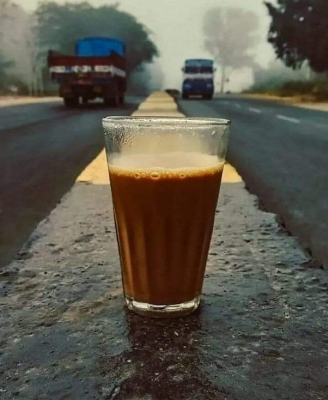
A rainy day always calls for steaming chai and freshly fried pakoras.
How about some fresh hot tea at the chaiwala around the corner? Travel on the Indian railway and the tea- hawker cries out at every station, offering delicious kulhad chai for a few rupees. The fragrant smell of tea brewing with ginger and cardamom soon percolates the air. Indians seem inseparable from their tea. Surely this obsession is an ancient one?
In fact, tea was practically unknown to Indians until the British came, saw and conquered! Though there was a native Indian variety of tea in Assam, the local Assames people would cook the leaves with garlic and oil and eat it as a vegetable!
BELOVED IN BRITAIN
By the tail-end of the 17th century, the British East India Company had started trading with Cinha, besides expanding their trading operations in India. The Chinese were happy to export gorgeous silk, porcelain china for delicate crockery…and a new type of drink called tea. Tea actually started becoming popular as a medicinal drink – advertised as curing all illnesses under the sun from cold to headache to stomach problems to conjunctivitis (!) – and helping its drinkers reach “an extreme old age”. It soon became the rage all over upper-class Europe and the American colonies, as a way to display wealth and status, as it was very expensive. People had it the Chinese way – lightly brewed in hot water, with nothing added to it. Over time, the British started adding sugar, another luxury imported from the booming sugar plantations of the Americas. Soon, a splash of milk was often added as well.
Throughout the 18th century, tea became the preferred drink of the British people…and still hardly anyone in India had even heard of it!
However, the British East India Company was in trouble. Like the Indians, the Chinese too were only interested in gold and silver was leaving its shores regularly. Something had to be done to convince the Chinese to accept goods rather than money in exchange for their tea. But what?
THE TEA TRIBES OF ASSAM
The British now started offering cheap land in Assam to European planters to grow tea. The first tea plantation was set up in Assam in the 1830s using indentured labour. The European planters preferred Indian “jungly tribes” as workers as they were believe to be the only people hardly enough to put up with the awful working conditions.
There was soon a large influx of tribal adivasis from Jharkhand to Assam. They make up a larger part of the population even today and are sometimes called the tea tribes of Assam. On paper, these people were not slaves, but taken to Assam for three to five years, after which they were meant to be free to return to their homes. In reality, many workers were brought in under false promises, and they would often have to keep working under conditions of near-slavery long after their contracts were over.
CHAI FROM CHINA
Fortunately for them, and unfortunately for the Chinese, an idea was waiting to be born. The opium drug, which was grown in India, had started to become popular with the Chinese public. Alarmed at this growing drug menance, the Chinese emperor banned all opium imports. However, the Europeans simply switched to smuggling opium illegally into China, in return for their precious tea cargo. They even fought and defeated the Chinese emperor for the right to selling this harmful drug to the Chinese people. This led to the worst drug addiction problem ever seen in the world where one of every four Chinese men became a hopeless opium addict.
In the 1830s, once the British were masters of large parts of India, they decided to start tea cultivation in India. In fact, they even sent a British spy into the interiors of China to steal the secrets of tea cultivation from them. The spy disguised himself as a Chinese wise-man!
CHAI CONQUERS INDIA
In the early 20th century, the Indian Tea Association wanted to get Indians hooked to tea along with the rest of the world. A massive marketing campaign was launched across the Indian Railways. Giant hoardings were put up to advertise tea, along with recipes. People were hired to make and serve tea at all major stations. British companies like Brooke Bond tried to sell tea by giving away free samples. However, Indians didn’t seem to take to this pale bitter brew…until the Indian tea vendors ignored the recipes of their English instructors and brewed it strongly with lots of milk, sugar and spices like cardamom, to imitate the hot flavoured milk that Indians were used to!
This new hybrid tea, known as “masala chai”, soon became a runaway hit in India. Today, India is one of the largest producers of tea in the world, but more than 70% of it is consumed within the country, and we can confidently call tea the national drink of India. But this has only happened in the last 100 years!
Picture Credit : Google
